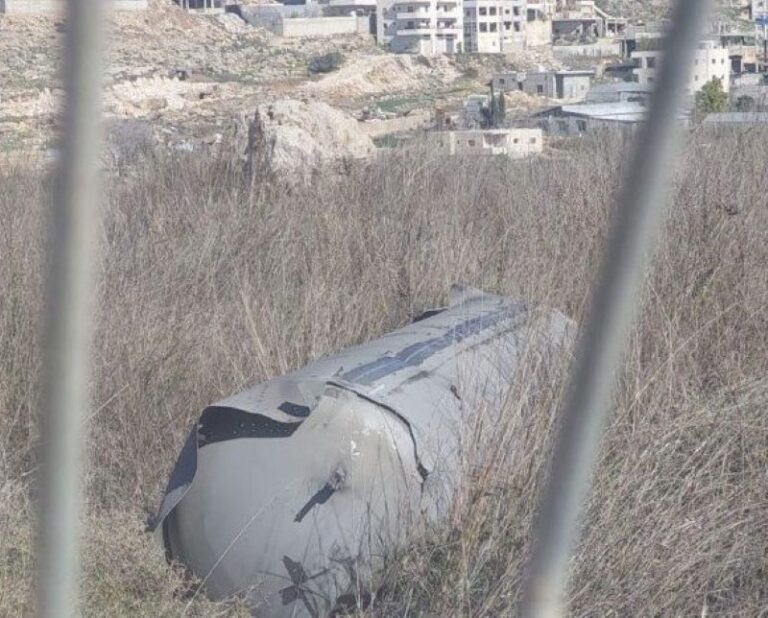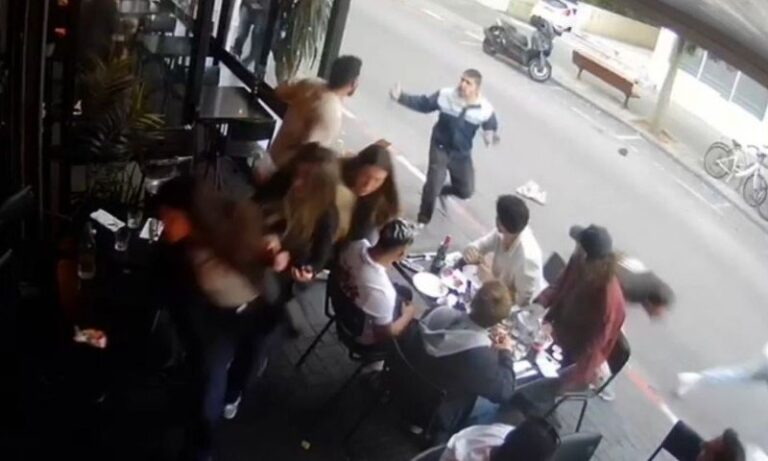V’sheretz haye’or tzefardim v’alu u’ba’u b’veisecha … uv’chadarecha uv’misharosecha (7:28)
The Gemora in Pesachim (53b) relates that the righteous Chananya, Mishael, and Azaryah allowed themselves to be thrown into a fiery oven rather than flee or bow down to Nebuchadnezzar’s idolatrous statues. The Gemora explains that they derived the propriety of their conduct from the frogs in Egypt. They reasoned that if the frogs, which didn’t have a mitzvah to die in sanctification of Hashem’s name, nevertheless willing entered the Egyptians’ hot ovens, they, who had such a mitzvah, should certainly be willing to perform it by being thrown into the burning furnace rather than transgress or flee.
The Shaagas Aryeh questioned their calculation. Although it is true that the frogs didn’t have a mitzvah to sanctify Hashem’s name, they did have a separate obligation to enter all of the places enumerated in our verse, which include the ovens. If so, how could Chananya, Mishael, and Azaryah derive a source for their actions from the frogs when they didn’t have instructions to enter the fiery oven?
At the age of seven, the Vilna Gaon answered that our verse simply states that there must be some frogs in each of these locations. However, no individual frog was commanded to enter any specific place. Therefore, every single frog could have exempted itself from entering the ovens with the claim that it would infest a more comfortable location and leave the ovens for the other frogs.
From the fact that we nevertheless find that individual frogs were willing to enter the ovens even though they weren’t explicitly commanded to do so, Chananya, Mishael, and Azaryah were able to derive the propriety of their actions. Upon hearing this clever answer, the excited Shaagas Aryeh picked up the young Vilna Gaon and kissed him on the forehead.
Applying this brilliant insight on a practical level, the Darkei Mussar notes that many times a teacher, parent, or communal organization asks for volunteers to assist with a project or act of kindness. Not a single hand goes up as each person excuses himself with the thought that somebody else can do it. The Vilna Gaon teaches that we must learn from the frogs that “the buck stops here” and take responsibility to personally see to it that the job gets done properly.
Vayomer Hashem el Moshe emor el Aharon n’tei es mat’cha v’hach es afar ha’aretz v’haya l’kinim b’chol eretz Mitzrayim (8:12)
Although we typically associate Moshe with bringing the 10 plagues upon Egypt, a careful examination of the verses reveals that Hashem actually commanded Moshe to have Aharon bring about the first three plagues. Rashi explains that because Moshe had gratitude to the river which had protected him when he was placed there as an infant, it was inappropriate for him to strike the water for the first two plagues (blood and frogs). This sense of appreciation is understandable, as the water sheltered him, and it was there that Pharaoh’s daughter discovered and rescued him.
However, regarding the third plague – lice – Rashi’s explanation that it was inappropriate for Moshe to strike the same ground which protected him by hiding the body of the Egyptian that he slew is difficult to understand. Although Moshe thought that nobody saw the killing, in reality Dasan and Aviram witnessed the murder. They informed on him to Pharaoh, who would have killed Moshe if not for a miracle that saved his life (Rashi 2:14-15). Practically speaking, the ground did absolutely nothing to benefit or assist Moshe in any way. If so, why did he feel gratitude toward it, and why couldn’t he strike it himself to bring about the plague of lice?
One commentator on the Medrash (Shemos Rabbah 10:7) suggests that the ground provided Moshe temporary peace-of-mind by allowing him to think for at least one day that his killing would go unnoticed. I would like to alternately suggest that the Torah is teaching us the fallacy of a common English expression. If we give of our precious time, energy, and heart in an earnest attempt to help somebody out, only to have our efforts fail, the average American will tell us, “Thanks, but no thanks.” This expression indicates that he owes us no debt of gratitude for our efforts and not-so-subtly suggests that next time we should just mind our own business. However, the Torah teaches that because the ground was willing to help and tried to be of assistance in doing its best to cover up the taskmaster’s corpse, Moshe was obligated to show his appreciation for its good-faith efforts and was unable to strike it to bring about the plague of lice.
I once shared this thought in a Torah class that I taught. Later that week, a woman called to say that her husband had offered to help her clean the house. Unfortunately, although his intentions were good, his cleaning skills left something to be desired. She explained that when he finished, not only was the house still a mess, but it would take her considerable work just to get it back to where he started! She was about to tell him, “Thanks, but no thanks,” when she remembered the lesson she had just been taught.
So many times a relative, a co-worker, or a shadchan will volunteer to try to help us out. Unfortunately, these efforts don’t always lead to the results we were hoping for. The next time it happens, instead of rubbing the failure in to somebody who already feels badly enough, let us remember the lesson of Moshe and the ground and express our sincere appreciation for their time and good intentions.
Vat’hi ha’kinim ba’adam uvab’heima kol afar ha’aretz haya kinim b’chol eretz Mitzrayim (8:13)
A number of our greatest Rabbis (Rambam, Rabbeinu Yonah, Meiri, Vilna Gaon) write in their commentaries on Pirkei Avos (5:4) that although nine of the ten plagues in Egypt didn’t affect the Jews in any way, the lice which afflicted Egypt during the third plague also infested the land of Goshen where the Jews lived. However, the lice didn’t cause the Jews any suffering as they did the Egyptians. Where is this astonishing fact alluded to, and what was the reason for it?
The Mishmeres Ariel brings a strikingly simple proof to this claim. Rashi writes (Bereishis 47:29) that one of Yaakov’s reasons for requesting that Yosef not bury him in Egypt was to avoid the lice which would be swarming in the ground. However, if the lice were not present in the land of Goshen, Yaakov could have simply made Yosef swear to bury him there instead of burdening him to carry his body all the way to the land of Israel. From the fact that Yaakov made him do so, we can deduce that he knew that this option wouldn’t be sufficient to alleviate his concern because the lice would also be present in Goshen.
Rav Chaim Kanievsky suggests the reason for this peculiarity was that in the first two plagues, Pharaoh’s magicians were able to duplicate the actual plague. As such, the only proof that Moshe and Aharon’s plagues were caused by Hashem and not through sorcery was the fact that they miraculously stopped at the borders of the Jewish land of Goshen. During the plague of lice, on the other hand, Pharaoh’s magicians were unable to copy the plague. They freely admitted that it must have been performed by Hashem, and there was therefore no need for the additional miracle of preventing the lice from entering the land of Goshen.
Answers to the weekly Points to Ponder are now available!
To receive the full version with answers email the author at [email protected].
Parsha Points to Ponder (and sources which discuss them):
1) At the time of Moshe’s birth, his parents are referred to generically as a man and a woman from the tribe of Levi (2:1-2). Their names are only mentioned for the first time in this week’s parsha (6:20), after Moshe had already been chosen to redeem the Jewish people. As his parents obviously possessed great holiness in order to merit giving birth to such a special child, why are their names omitted until much later? (Kehillas Yitzchok, Darash Moshe)
2) The Torah records (6:25) that Elozar the son of Aharon took for himself one of the daughters of Putiel as a wife for himself, and she bore for him Pinchas. Why does the Torah stress three times in one verse that Elozar’s wife and her actions were “for him?” (HaEmek Davar)
3) After Moshe and Aharon caused all of the water in Egypt to turn to blood, Pharaoh’s magicians duplicated the feat and therefore he wasn’t impressed (7:22). If all of the water had turned to blood, from where did they obtain water to turn into blood? (Targum Yonason ben Uziel, Rabbeinu Bechaye, Paneiach Raza, Tosefos Rid)
4) As Moshe was preparing to leave the city to pray for the end of the hail, he informed Pharaoh (9:30) that he recognized that Pharaoh still didn’t fear “Hashem Elokim.” This is the first time since Parshas Bereishis (3:23) that these two names of Hashem are used in conjunction. What is the significance of this? (Shu”t Maharshdam Orach Chaim 3, Aleinu L’shabeiach)
© 2011 by Oizer Alport.










